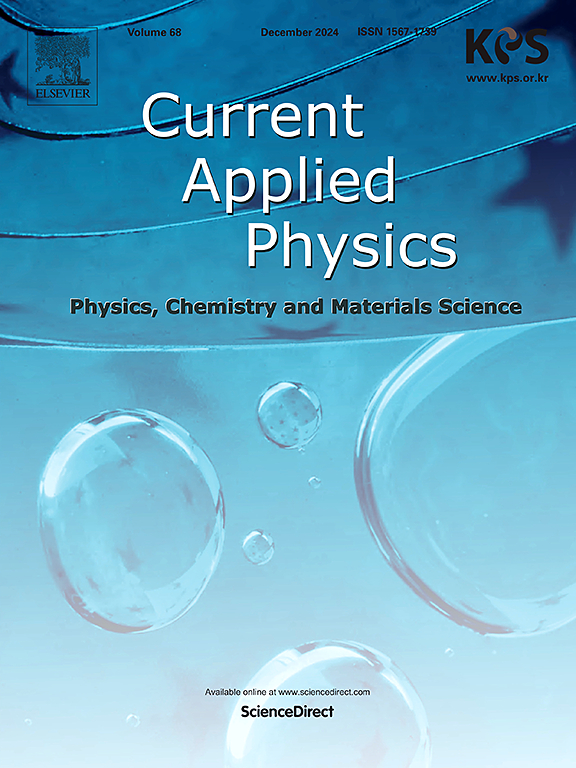Enhanced Photoelectrochemical performance by rapid electron transfer in reduced graphene oxide/CaWO4 composite photoanode
IF 3.1
4区 物理与天体物理
Q3 MATERIALS SCIENCE, MULTIDISCIPLINARY
引用次数: 0
Abstract
Scheelite oxides and their derivatives are renowned for their exceptional stability, high photocatalytic efficiency, and versatile structural design, positioning them as a promising category of semiconductor photocatalysts. In this study, Scheelite calcium tungstate (CaWO4) films were fabricated on fluorine-doped tin oxide (FTO) substrates using the chemical bath deposition (CBD), followed by calcination. Graphene oxide (GO) was independently synthesized via the Hummers' method and subsequently deposited onto the CaWO4 films through electrophoretic deposition (EPD) to form reduced graphene oxide/CaWO4 (rGO/CaWO4) composites. The incorporation of rGO was found to play a crucial role in enhancing electron transport within the rGO/CaWO4 films. In photoelectrochemical (PEC) water splitting, the rGO/CaWO4 demonstrated a remarkable photocurrent of 13 μA cm−2 at 1 V, far exceeding the 0.4 μA cm−2 achieved by pristine CaWO4 under identical conditions. This 32.5-fold enhancement in photocurrent is attributed to the rapid electron transfer facilitated by the rGO in the composite structure.

还原氧化石墨烯/CaWO4复合光阳极的快速电子转移增强了光电化学性能
白钨矿氧化物及其衍生物以其优异的稳定性、高光催化效率和多用途的结构设计而闻名,使其成为半导体光催化剂的一个有前途的类别。本研究采用化学浴沉积法(CBD)在掺氟氧化锡(FTO)衬底上制备了钨酸白钨矿钙(CaWO4)薄膜,然后进行了煅烧。通过Hummers的方法独立合成氧化石墨烯(GO),然后通过电泳沉积(EPD)沉积在CaWO4薄膜上,形成还原氧化石墨烯/CaWO4 (rGO/CaWO4)复合材料。研究发现,还原氧化石墨烯的掺入对增强还原氧化石墨烯/CaWO4薄膜内的电子传递起着至关重要的作用。在光电化学(PEC)水分解中,rGO/CaWO4在1 V时表现出13 μA cm−2的光电流,远远超过了相同条件下原始CaWO4的0.4 μA cm−2。这32.5倍的光电流增强是由于复合结构中氧化石墨烯促进了快速的电子转移。
本文章由计算机程序翻译,如有差异,请以英文原文为准。
求助全文
约1分钟内获得全文
求助全文
来源期刊

Current Applied Physics
物理-材料科学:综合
CiteScore
4.80
自引率
0.00%
发文量
213
审稿时长
33 days
期刊介绍:
Current Applied Physics (Curr. Appl. Phys.) is a monthly published international journal covering all the fields of applied science investigating the physics of the advanced materials for future applications.
Other areas covered: Experimental and theoretical aspects of advanced materials and devices dealing with synthesis or structural chemistry, physical and electronic properties, photonics, engineering applications, and uniquely pertinent measurement or analytical techniques.
Current Applied Physics, published since 2001, covers physics, chemistry and materials science, including bio-materials, with their engineering aspects. It is a truly interdisciplinary journal opening a forum for scientists of all related fields, a unique point of the journal discriminating it from other worldwide and/or Pacific Rim applied physics journals.
Regular research papers, letters and review articles with contents meeting the scope of the journal will be considered for publication after peer review.
The Journal is owned by the Korean Physical Society.
 求助内容:
求助内容: 应助结果提醒方式:
应助结果提醒方式:


